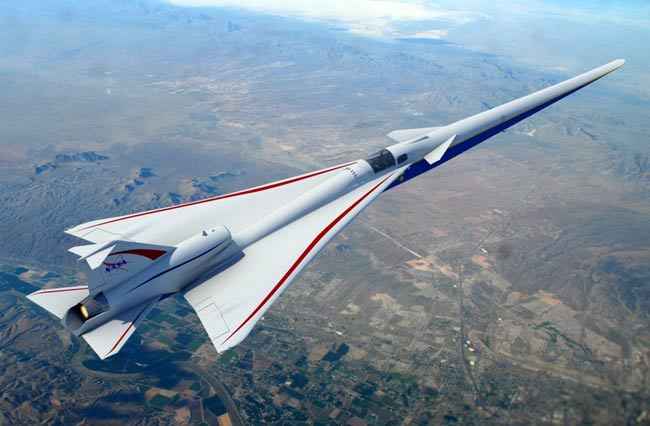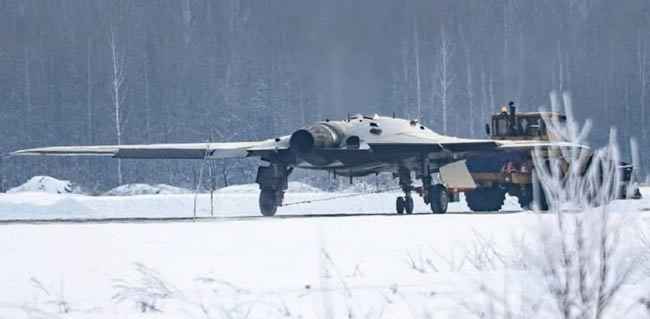18 futuristic commercial and military aircraft concepts that will dominate the skies

The aviation industry, until recently, was driven by the need to have bigger aircraft that could carry more people. This led to the birth of wide-body aircraft such as the Airbus A380 and the Boeing 747. Unfortunately, large aircraft are only profitable if all passenger seats are filled and that’s turning out to be an issue. So with the industry expecting a seven-fold increase in air-traffic, the solution is to have more fuel-efficient aircraft which are smaller in size and have a much-reduced emission footprint. In the quest to achieve this goal, we are not only seeing new fuel mixtures but also innovative aircraft designs. We might end up seeing the Tesla of the skies in the later future but for now, the following aircraft designs show the most promise.
 Survey
Survey1. Flying-V
Promising fuel savings of about 20% over the existing designs, the Flying-V is a promising design. The only catch is that it has to adopt a unique v-shaped design for the fuselage which means the passengers have to be seated along the wings. While efficiency-wise this design promises to work wonders, there’s a nasty drawback from the passenger perspective. When the aircraft banks to turn, passengers will experience an uneasiness similar to that of a roller-coaster ride. KLM, the Dutch national carrier and TU Delft, a Dutch university are working together on realising this design.
2. Airbus CityAirbus
Built to become the taxi of the skies, the CityAirbus is an electrically-powered VTOL (Vertical Take-off and Landing) aircraft that can seat 4 passengers or 1 crew along with 3 passengers. Why the “or”? Well, it’s an unmanned aircraft. Whether this will end up being a fully autonomous vehicle is unclear at the moment but the remotely piloted prototype was successfully tested on the 3rd of May 2019 and commercial services should begin by 2023. The CityAirbus uses four ducted fans for a low acoustic footprint but the fully integrated drivetrain can support eight propellers and is powered by eight 100 kW Siemens SP200D direct-drive electric motors. The ride time is limited to 15 minutes.
3. Boeing Electric Freighter
Air crafts aren't just for passengers. Cargo freights are just as big a business as commercial passenger services and aircraft are often designed to incorporate the myriad requirements of transporting cargo. Boeing's aptly named Electric Freighter features a much smaller design for shorter transport routes and is fully autonomous. Unveiled at the Paris Air Show 2017, the Electric Freighter concept completed an electric vertical-takeoff-and-landing (eVTOL) trial in January 2018.
4. Workhorse SureFly VTOL
They’re calling it the reinvention of the helicopter. The SureFly VTOL is a twin-seater rotorcraft which has eight motors driving a single carbon fiber propeller and also features a backup battery system and a ballistic parachute in case of emergencies. With a range of 110 kilometers (1 hour), the SureFly packs a full redundancy for the computer and the electrical system. The rotors are driven by a hybrid electric 200-hp gasoline generator and the battery system acts as a backup as mentioned previously.
5. Link & Fly
Purely a concept, Link & Fly brings the idea of duality to the air. Think of it like a train that can also fly. As odd as it may seem to one's imagination, the concept relies on separating the wings from the fuselage. In the separate state, the fuselage acts as a train and when the wings are attached on top of the fuselage, it supposedly becomes air-worthy. The concept begs for a hundred off questions to be answered. How on earth are wheels supposed to run on rails? What would be the attachment mechanism and how would the wing concept deal with the stresses of flight? What kind of materials would the body be built from? Can it make use of existing rail infrastructure or is a new system required?
6. Boeing's Hypersonic concept
Boeing unveiled a new hypersonic passenger aircraft concept at the AIAA Aviation Forum 2018 which is theoretically capable of traveling at speeds of Mach 5 (6,125 kmph) and beyond. The currently unnamed hypersonic concept is being designed with passenger as well as military applications in mind. Featuring a narrow fuselage with tapered ends and swept-back wings, the hypersonic concept looks very similar to the older Concorde but "pointier".
7. Lockheed Martin X-59 QueSST
Currently being developed for the NASA Low-Boom Flight Demonstrator program, the X-59 QueSST is a supersonic concept that is expected to cruise at Mach 1.42 (1,510 kmph) at an altitude of 55,000 feet. While supersonic aircraft have been around for decades, this concept is all about reducing the sonic boom associated with breaking the sound barrier. The first X-59 will be delivered in late 2021 and it should create a low 75 Perceived Level decibel (PLdB) sonic "thump" rather than a much louder boom when crossing the sound barrier, thus, making it more acceptable for commercial use cases in populated regions.
8. Boom Technology Overture
Born out of a partnership between Richard Branson’s Virgin Galactic and Boom Technology, the Boom Overture is a supersonic passenger concept designed to fly at Mach 2.2 with a range of 8,300 km. Featuring a delta wing configuration similar to the Concorde, the Overture will be powered by three dry 67-89 kN turbofans. Boom Technology has already secured 76 commitments from five different airlines. Just like the Concorde, the Boom Overture is expected to cater to a premium segment of travelers. A demonstrator, the Boom XB-1 Baby Boom, is expected to undergo trials this year.
9. Boom XB-1 Baby Boom
A demonstrator for the Overture, the Boom XB-1 Baby Boom, is expected to undergo trials this year and will be a 1/3rd scale aircraft. It is planned to maintain speeds of Mach 2.2 and will have a range of 1900 km.
10. Spike Aerospace S-512
Another in the line of business supersonic jets, the Spike Aerospace S-512 is an 18-seater twin-jet aircraft which promises to make the London-New York router shorter by about 50%. The aircraft is very small with a length of 37 meters and a wingspan of 18 meters. The S-512 was supposed to have a demonstrator by the end of 2018 with the first set of deliveries planned in 2023.
11. Sukhoi S-70 Okhotnik
The first sixth-generation military aircraft in this list, the Sukhoi Okhotnik is being developed by Sukhoi for the Russian Air Force and will be a stealth heavy unmanned combat aerial vehicle with some technologies from the Su-57 fifth-generation fighter craft. The Okhotnik uses a flying-wing concept and makes use of composite materials and stealth coatings to reduce its radar signature. Having a range of 6000 km and a maximum speed of 1000 kmph, the Okhotnik is designed to be a companion to manned parent aircraft such as the Su-57.
12. BAE Systems Tempest
Built to replace the Eurofighter Typhoon, the Tempest is a sixth-generation fighter being developed by BAE Systems, Rolls-Royce, Leonardo S.p.A. and MBDA. It’s expected to enter into service in 2035 and we know little about the aircraft or the technologies that are planned. The Guardian reports that the Tempest will incorporate AI, directed-energy weapons and use swarming technology to control drones. It’s expected that the UK will invite India to be part of the Tempest development program.
13. Boeing F/A-XX Program
Referred to as the Next Generation Air Dominance Program, the F/A-XX program is about developing the sixth-generation air-superiority fighter for the US armed forces. The program is looking to develop an aircraft to replace the highly-maneuverable F/A-18E/F so we can expect to see a family of aircraft with different body configurations rather than a single frame. It’s also expected to have an open architecture which makes the aircraft modular in terms of sensors, payloads and weapons so mission-specific configurations will be made possible. Lastly, the F/A-XX is expected to be completely unmanned.
14. China J-XX
Little is known about China’s sixth-generation fighter. The fifth-generation J-20 was only inducted in 2017 but China has already started working on their sixth-generation fighter. Given China’s dominance in the AI research domain, this sixth-generation fighter is expected to incorporate a lot of AI integration along with real-time analytics for faster targeting. We don’t know if this will be manned or unmanned but it seems more likely to be the latter. The J-20 are supposedly going to be upgraded to newer WS-15 engines as a stopgap measure while the sixth-generation fighter is completed.
15. Mikoyan MiG-41
Positioned as a supersonic stealth interceptor, the Mikoyan MiG-41 is intended to replace the Mig-31 and isn’t considered to be a proper sixth-generation aircraft but more of a stopgap measure. It will reportedly be capable of speeds of Mach 4-4.3 and is expected to operate at very high-altitudes using the same engine as the Su-57.
16. Système de combat aérien du futur (SCAF)
Dassault and Airbus are working together on the New Generation Fighter for France, Germany and Spain. The three countries have very capable multi-role fighters in the form of the Rafale, Eurofighter Typhoon and the F-18 Hornet, however, there are no planned replacements aside from the Eurofighter Typhoon. This is where the SCAF or NGF comes into the picture. We’ve only seen a model of the aircraft as of now and it features a delta wing without any vertical stabilisers or canards, thus, it has a very small radar cross section. Test flights are expected sometime in 2025 with the flights entering into service in 2040.
17. Mitsubishi F-3
Japan’s 6th Generation fighter is expected to be a twin-engine air-superiority fighter that’s expected to replace the current F-2 sometime in the late 2030s after the current fleet receives at least one engine upgrade. The F-3 came as a surprise to many given that Japan was intending to purchase more F-35A from USA, however, the two are very dissimilar aircraft. The F-3 is a light tactical fighter whereas the F-35A is more of a multi-role family.
18. Skyborg
A thing of nightmares, the Skyborg is a recently announced AI program that will have autonomous drones and fighter jets operating as a swarm. The name Skyborg seems to be the culmination of Skynet and the Borg from the popular Terminator and Star Trek Sci-Fi shows. Both, evil AI based lifeforms that are all about dominating the earth/galaxy. Skyborg is likely to be implemented in stages with the first stage being an assistive tech and the later stages will see Skyborg taking on a more autonomous role.
Mithun Mohandas
Mithun Mohandas is an Indian technology journalist with 14 years of experience covering consumer technology. He is currently employed at Digit in the capacity of a Managing Editor. Mithun has a background in Computer Engineering and was an active member of the IEEE during his college days. He has a penchant for digging deep into unravelling what makes a device tick. If there's a transistor in it, Mithun's probably going to rip it apart till he finds it. At Digit, he covers processors, graphics cards, storage media, displays and networking devices aside from anything developer related. As an avid PC gamer, he prefers RTS and FPS titles, and can be quite competitive in a race to the finish line. He only gets consoles for the exclusives. He can be seen playing Valorant, World of Tanks, HITMAN and the occasional Age of Empires or being the voice behind hundreds of Digit videos. View Full Profile



